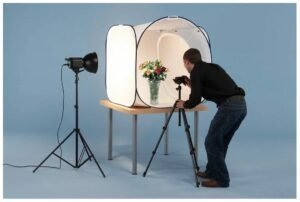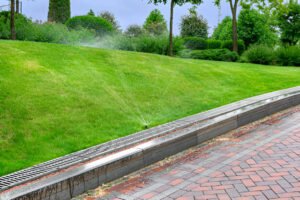For many outdoor enthusiasts, a steaming cup of coffee is an essential part of the camping experience. The aroma of freshly brewed coffee wafting through the crisp morning air can elevate your outdoor adventure and provide the perfect start to a day of exploration. However, brewing a delicious cup of coffee in the wilderness presents unique challenges and opportunities. In this comprehensive guide, we’ll explore the best ways to make coffee when camping, from simple and portable methods to more elaborate setups for the true coffee connoisseur.
Why Invest in Good Camp Coffee?
The Perfect Start to Your Day
There’s something magical about sipping a hot cup of coffee while surrounded by nature. The combination of caffeine and the great outdoors can invigorate your senses and prepare you for the day’s adventures. Investing in a good camp coffee setup ensures that you can enjoy this simple pleasure even when far from the comforts of home.
Boosting Morale and Energy
Coffee isn’t just a beverage; it’s a mood enhancer and energy booster. When camping, especially during multi-day trips, having a reliable source of caffeine can help maintain morale and provide the energy needed for hiking, climbing, or other outdoor activities. A well-prepared cup of coffee can be the difference between a sluggish morning and an energetic start to your day.
Socializing and Bonding
Coffee-making can become a communal activity when camping, bringing people together and fostering a sense of camaraderie. Sharing a pot of freshly brewed coffee around the campfire can lead to memorable conversations and strengthen bonds with fellow campers. The ritual of preparing and enjoying coffee together can become a cherished part of your camping routine.

When Choosing a Camp Coffee Method
Portability and Weight
When selecting a coffee-making method for camping, consider the weight and bulk of the equipment. If you’re backpacking or hiking long distances, every ounce counts, so opt for lightweight and compact options. For car camping or shorter trips, you may have more flexibility with larger or heavier setups.
Ease of Use and Cleanup
Camping often means limited resources and facilities, so choose a coffee-making method that’s easy to use and clean up. Consider factors like water availability, waste disposal, and the complexity of the brewing process. Simple methods that require minimal equipment and cleanup are often ideal for camping scenarios.
Brew Quality and Personal Preferences
While convenience is important, don’t compromise too much on taste. Consider your personal coffee preferences and choose a method that can produce a brew that satisfies your palate. Some methods may be better suited for strong, bold flavors, while others might excel at producing a smoother, more nuanced cup.
Durability and Reliability
Camping gear needs to withstand the rigors of outdoor use. Look for coffee-making equipment that’s durable, weather-resistant, and capable of functioning in various conditions. Avoid fragile or overly complex setups that might break or malfunction in the wilderness.

Top Methods for Making Coffee When Camping
1. French Press
The French press is a popular choice for campers who appreciate a full-bodied, rich cup of coffee. This method involves steeping coarse ground coffee in hot water and then pressing a plunger to separate the grounds from the liquid.
Pros:
- Produces a full-flavored, robust cup of coffee
- Simple to use and clean
- Available in various sizes and materials (plastic, stainless steel, or titanium)
Cons:
- Can be bulky, especially for backpacking
- Requires careful cleaning to prevent residue buildup
- Glass models are fragile and not suitable for rugged camping
Best for: Car camping, base camping, or short backpacking trips where weight isn’t a primary concern.

2. Pour-Over Drip Coffee
Pour-over drip coffee methods, such as the Hario V60 or GSI Outdoors Ultralight Java Drip, offer a clean and flavorful brewing experience. This method involves pouring hot water over ground coffee in a filter, allowing it to drip into a cup or pot below.
Pros:
- Produces a clean, bright cup of coffee
- Lightweight and compact options available
- Easy to clean and maintain
Cons:
- Requires careful pouring technique for best results
- May need disposable filters, which can create waste
- Can be slower than other methods, especially when brewing for multiple people
Best for: Backpacking, lightweight camping, or those who appreciate a cleaner cup of coffee.

3. AeroPress
The AeroPress is a versatile and compact coffee maker that has gained popularity among campers and hikers. It uses pressure to force hot water through finely ground coffee, resulting in a smooth and rich brew.
Pros:
- Compact and lightweight
- Quick brewing time (about 1-2 minutes)
- Versatile, capable of making regular coffee or espresso-style shots
- Easy to clean
Cons:
- Only brews one or two cups at a time
- Requires specific filters (though reusable options are available)
- Learning curve for optimal technique
Best for: Solo campers, backpackers, or those who prioritize quick and easy brewing.

4. Cowboy Coffee
Cowboy coffee is a traditional method that requires minimal equipment, making it ideal for minimalist campers. It involves boiling water with coffee grounds directly in a pot or kettle, then allowing the grounds to settle before pouring.
Pros:
- Requires no special equipment beyond a pot and heat source
- Can brew large quantities for groups
- Authentic, rustic camping experience
Cons:
- Can result in a gritty cup if not prepared carefully
- Inconsistent flavor profile
- Requires careful pouring to avoid disturbing settled grounds
Best for: Minimalist campers, large groups, or those seeking an authentic outdoor coffee experience.

5. Instant Coffee
While not the most gourmet option, instant coffee has come a long way in recent years. High-quality instant coffee packets can provide a quick and convenient caffeine fix with minimal fuss.
Pros:
- Extremely lightweight and compact
- No special equipment required
- Quick and easy preparation
- No cleanup necessary
Cons:
- Generally lower quality taste compared to freshly brewed methods
- Limited flavor options
- Can be more expensive per cup than other methods
Best for: Ultralight backpackers, emergency kits, or those prioritizing convenience over flavor.

Tips for Brewing the Perfect Camp Coffee
1. Use Fresh, Quality Beans
Start with high-quality, freshly roasted coffee beans. Consider pre-grinding your beans at home and storing them in an airtight container to maintain freshness during your trip.
2. Bring a Hand Grinder
For the ultimate freshness, bring a compact hand grinder and whole beans. Grinding just before brewing ensures the best flavor, though it does add an extra step to the process.
3. Heat Water Properly
Aim for water temperature between 195°F and 205°F (90°C to 96°C) for optimal extraction. Let boiling water cool for about 30 seconds before brewing to avoid over-extraction and bitterness.
4. Measure Carefully
Use a consistent coffee-to-water ratio for reproducible results. A general guideline is 1-2 tablespoons of ground coffee per 6 ounces of water, but adjust to your taste preferences.
5. Practice Leave No Trace
Dispose of coffee grounds properly by packing them out or burying them away from water sources and campsites. Use biodegradable filters when possible, and always follow local regulations and Leave No Trace principles.
FAQs (Frequently Asked Questions)
Q: Can I use regular coffee makers when camping?
A: While possible for car camping with access to electricity, traditional coffee makers are generally not practical for most camping situations due to their size, weight, and power requirements.
Q: How do I clean my coffee equipment while camping?
A: Rinse your equipment with hot water after each use. For deeper cleaning, use biodegradable soap and rinse thoroughly. Allow all components to dry completely before storing to prevent mold growth.
Q: What’s the best way to store coffee grounds while camping?
A: Store pre-ground coffee in airtight containers or resealable bags to maintain freshness. For longer trips, consider vacuum-sealed packets or individual serving packets.
Q: Can I make cold brew coffee while camping?
A: Yes, cold brew can be a great option for camping. Prepare it at home before your trip and store it in a sealed container. Dilute with water or milk when ready to drink.
Q: How do I heat water for coffee when camping without a stove?
A: Options include using a campfire with a heat-resistant kettle, portable solar-powered water heaters, or pre-heating water in insulated containers before your trip.
Q: Is it worth investing in specialty camp coffee gear?
A: If you’re a frequent camper and coffee enthusiast, investing in quality camp coffee gear can greatly enhance your outdoor experience. However, simpler methods can still produce satisfying results for casual campers.
Q: How can I froth milk for cappuccinos or lattes while camping?
A: Portable milk frothers or small, manual frothers are available for camping. Alternatively, vigorously shaking warm milk in a sealed container can create a basic froth.
Q: Are there eco-friendly alternatives to disposable coffee filters?
A: Yes, reusable cloth or metal filters are available for many brewing methods, reducing waste and environmental impact. These can be easily rinsed and reused throughout your camping trip.
Final Words
Making great coffee while camping doesn’t have to be a challenge. With the right method and equipment, you can enjoy a delicious cup of joe that rivals your favorite coffee shop, all while surrounded by the beauty of nature. Whether you prefer the simplicity of cowboy coffee, the convenience of instant, or the refined taste of pour-over or French press, there’s a camp coffee solution to suit every outdoor enthusiast’s needs and preferences.










